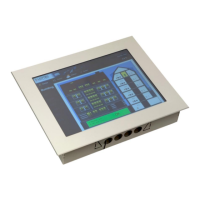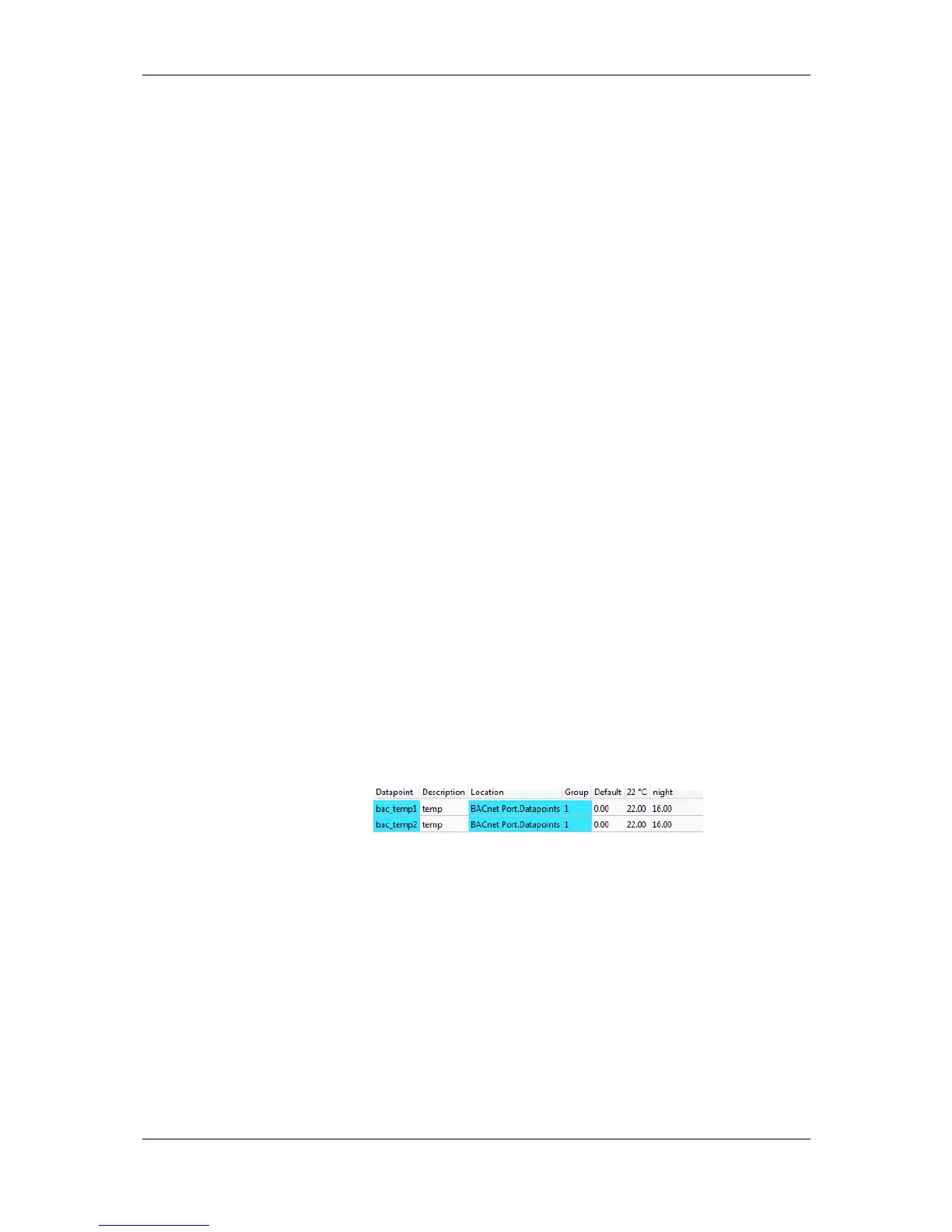L-VIS User Manual 193 LOYTEC
Version 6.2 LOYTEC electronics GmbH
The direction of BACnet server objects deserves a closer look. The direction specified for
data points in the configuration software always refers to the network view of the
communication. The definition of input and output objects in BACnet, however, refers to
the process view, which is opposite to the network. Therefore, a BACnet analog input (AI)
object is modeled as an analog output data point. The direction of client mappings naturally
refers to the network communication. Therefore, a write client mapping is represented as an
analog output data point.
In BACnet, commandable objects can be written with values at a certain priority. The value
with the highest priority is in effect. To revoke a previously written value, a special NULL
value is written. This takes back the value from the server object at the specified priority.
When all written values are withdrawn, the Relinquish_Default value is in effect.
The default value property of a technology independent data point is mapped to the
Relinquish_Default property for commandable objects. For BACnet objects which are not
commandable, the default value is used to initialize the Present_Value of the server object
directly. In this case, the default value is overwritten by successive writes and is therefore
lost, while in commandable objects, the default value is saved and reactivated whenever
there is no other known value for the object.
10.5.2 BACnet Schedulers
BACnet schedulers and the BACnet calendar adhere to the standard schedule and calendar
object in BACnet. For each scheduler a BACnet schedule object is created. The calendar
deserves a closer look. For each calendar pattern, a BACnet calendar object is created. The
visible calendar on the web interface is therefore a collection of BACnet calendar objects
and each calendar pattern is associated with the corresponding BACnet calendar object
instance number. The calendar pattern Holidays is for example visible as CAL,1 on the
BACnet port.
The BACnet schedule object allows only objects of one selected data type to be scheduled.
Therefore, schedulers on BACnet can only schedule one class of data points (only one
group of analog data points). As a consequence, the value preset in BACnet always has
only one element. The name of the value preset is not stored in BACnet technology and it is
not accessible over the BACnet network either. A default name is created for each value
used, such as ‘22 °C’ for an analog value. An example of two scheduled BACnet objects is
shown in Figure 10. When extended BACnet features are available, a preset label can be
assigned to a specific scheduled value. For example the value ’16 °C’ can be assigned
‘night’. Click in the column header and type the desired text.
Figure 10: Example value presets in BACnet schedulers.
Priorities of exception days in a BACnet scheduler range from 1 (the highest) to 16 (the
lowest). Weekdays in BACnet have no priority.
Changing the number of calendar patterns in a BACnet calendar can only be done through
the configuration software and not during run-time. The individual calendar pattern entries
in the calendar patterns can be changed at run-time. Therefore it is advisable to reserve a
suitable number of calendar patterns in a BACnet calendar and leave them empty if not
needed immediately.
10.5.3 BACnet Alarming
BACnet alarming on the device is based on the intrinsic reporting mechanism. Currently,
algorithmic reporting is not supported. Alarm conditions can only be applied to data points
which map to BACnet server objects. If defined, the intrinsic reporting properties of the

